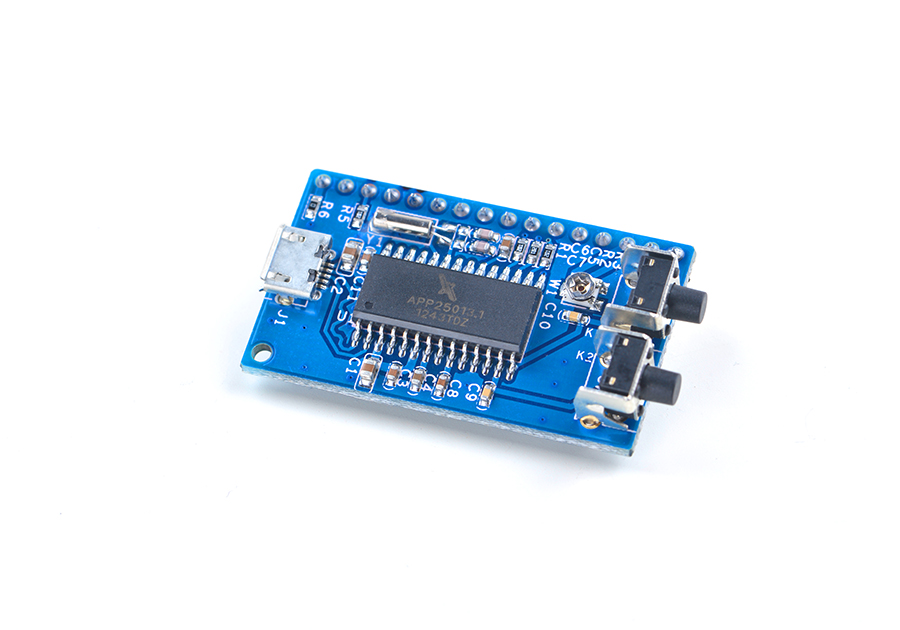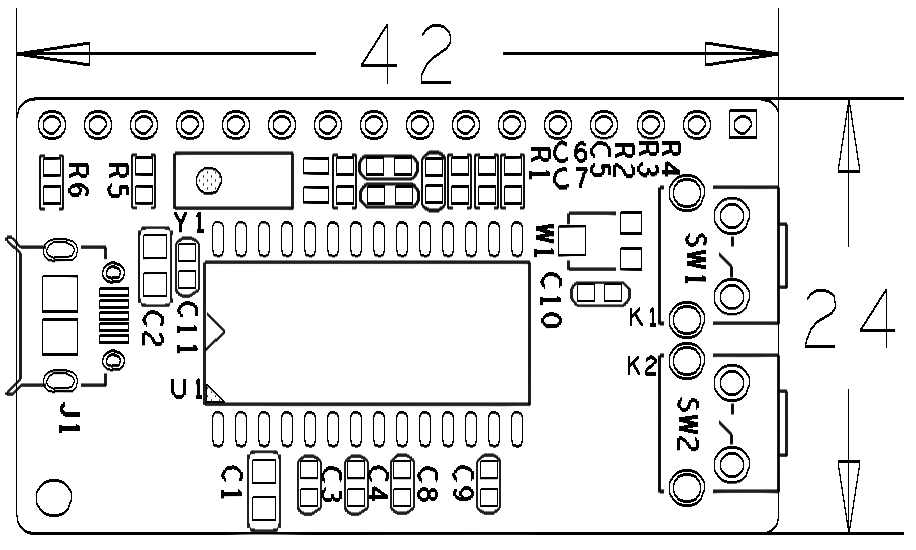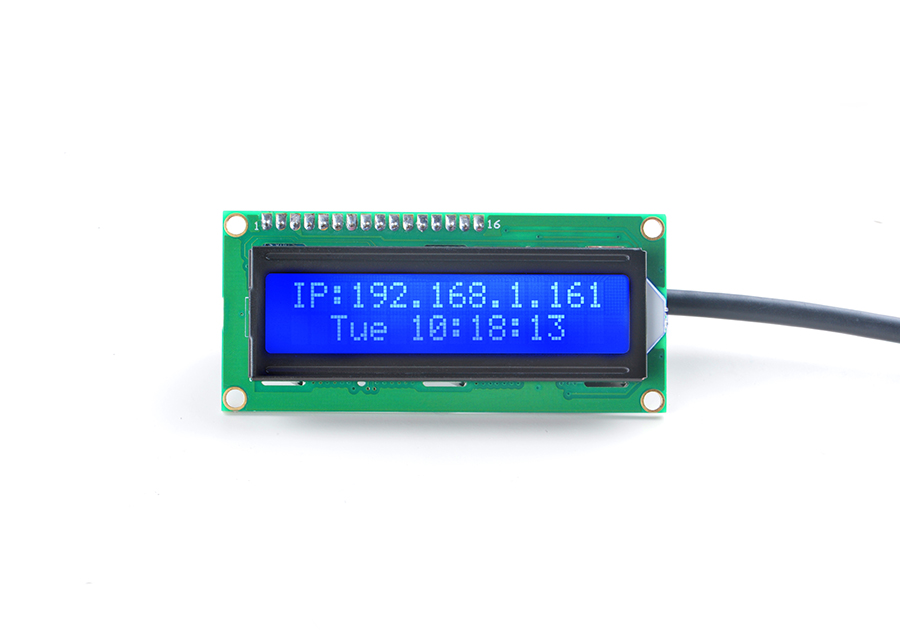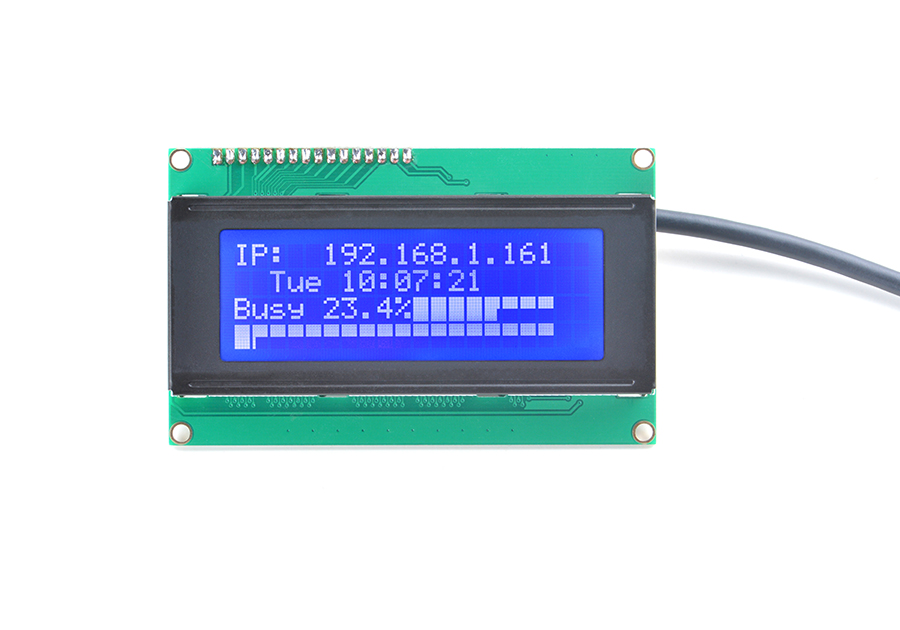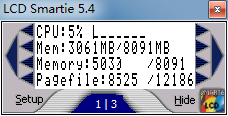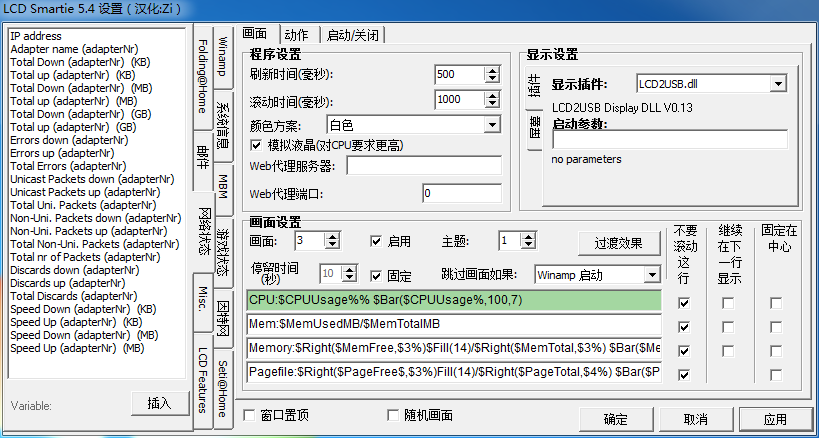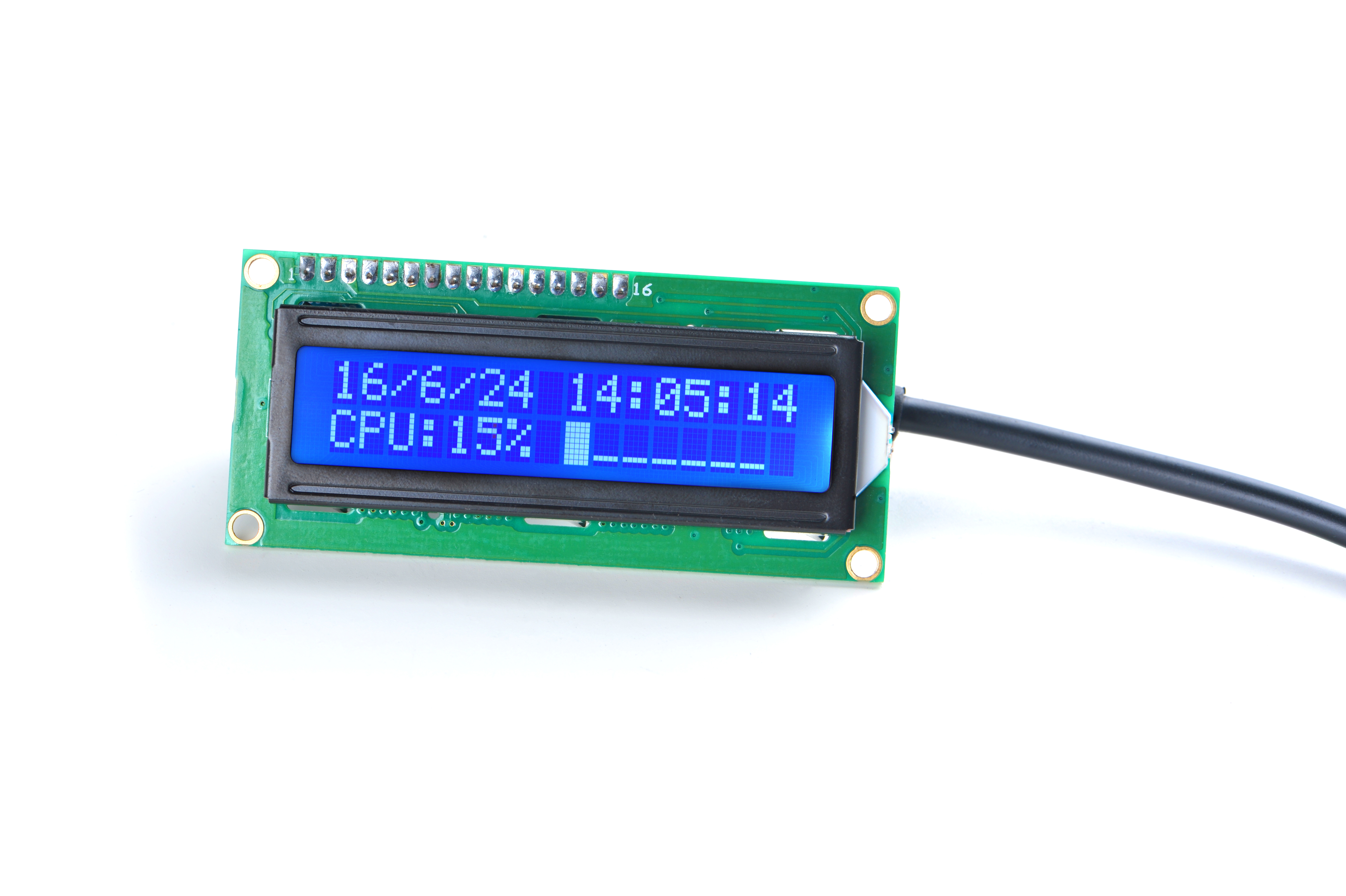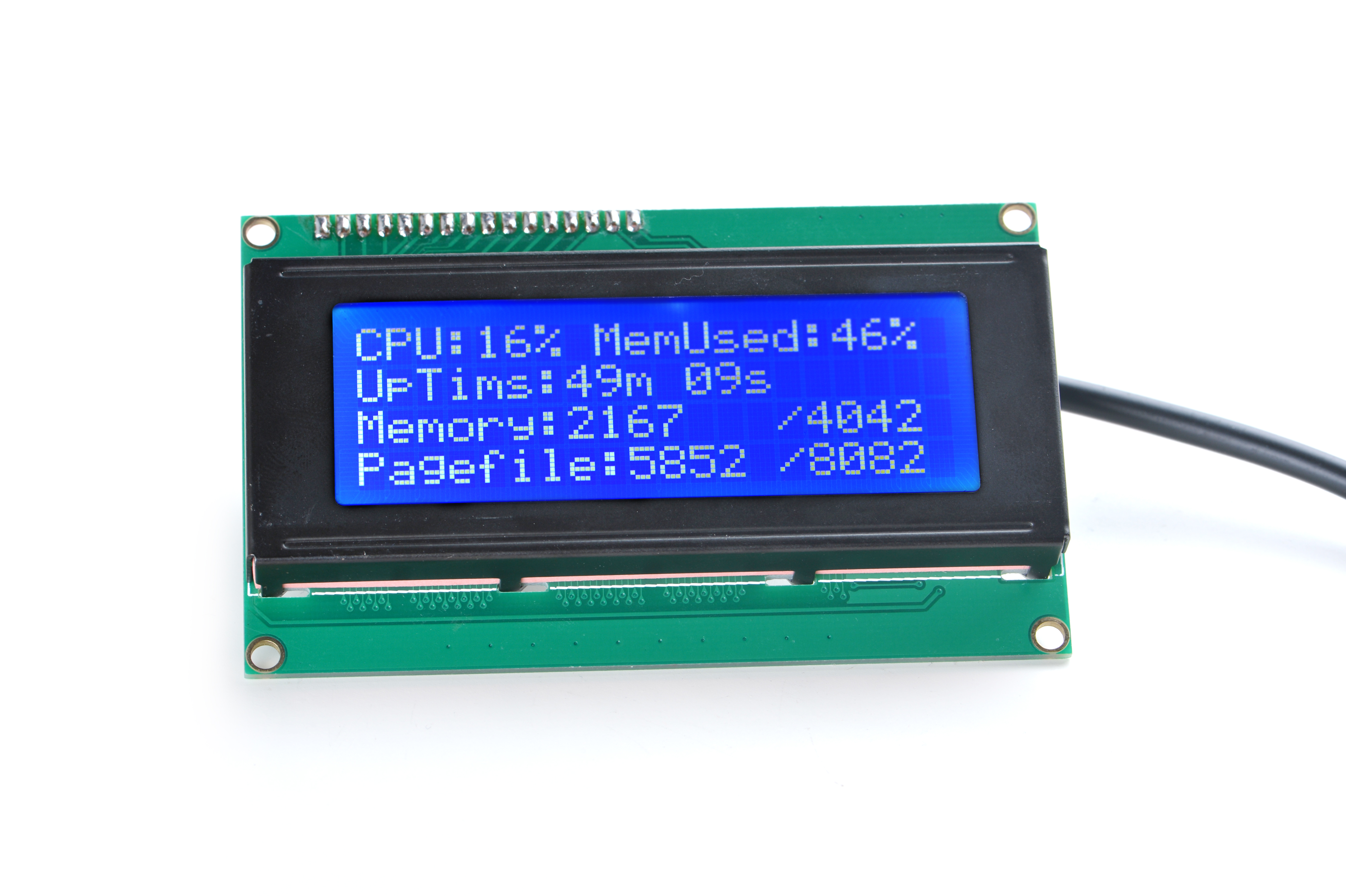Difference between revisions of "Matrix - LCD2USB"
(→介绍) |
(→介绍) |
||
| Line 1: | Line 1: | ||
[[Matrix - LCD2USB/zh|查看中文]] | [[Matrix - LCD2USB/zh|查看中文]] | ||
| − | == | + | ==Introduction== |
[[File:LCD2USB01.png|thumb|LCD2USB]] | [[File:LCD2USB01.png|thumb|LCD2USB]] | ||
| − | |||
* The Matrix-LCD2USB module is a simple and easy to use LCD module. It converts a parallel port to a USB port. | * The Matrix-LCD2USB module is a simple and easy to use LCD module. It converts a parallel port to a USB port. | ||
* It works with LCD4LINUX, LCD Smartie and LCDProc. There are plenty of open source code samples available on the internet. | * It works with LCD4LINUX, LCD Smartie and LCDProc. There are plenty of open source code samples available on the internet. | ||
Revision as of 09:59, 30 June 2016
Contents
1 Introduction
- The Matrix-LCD2USB module is a simple and easy to use LCD module. It converts a parallel port to a USB port.
- It works with LCD4LINUX, LCD Smartie and LCDProc. There are plenty of open source code samples available on the internet.
- It works with various LCDs: 2 * 16, 2 * 20, 4 * 20, 4 * 27, 4 * 40 and etc.
- It has two function keys which can be configured by users.
2 Features
- Micro USB interface
- Supports LCD4LINUX, LCD Smartie, LCDProc。
- Supports various LCD modules
- 2 x User key
- PCB dimension(mm): 24 x 42。
3 工作原理
LCD液晶其本身是并行接口,需要较多的IO资源才可以与其通讯。本模块使用AX2210单片机,通过USB接口接收需要显示的数据和控制命令,并解析转换成相应的指令,通过单片机的IO发送给LCD,从而控制LCD液晶的显示。
4 Applications
4.1 Connect to NanoPi M1
Refer to the following connection diagram to connect the module to the NanoPi M1:
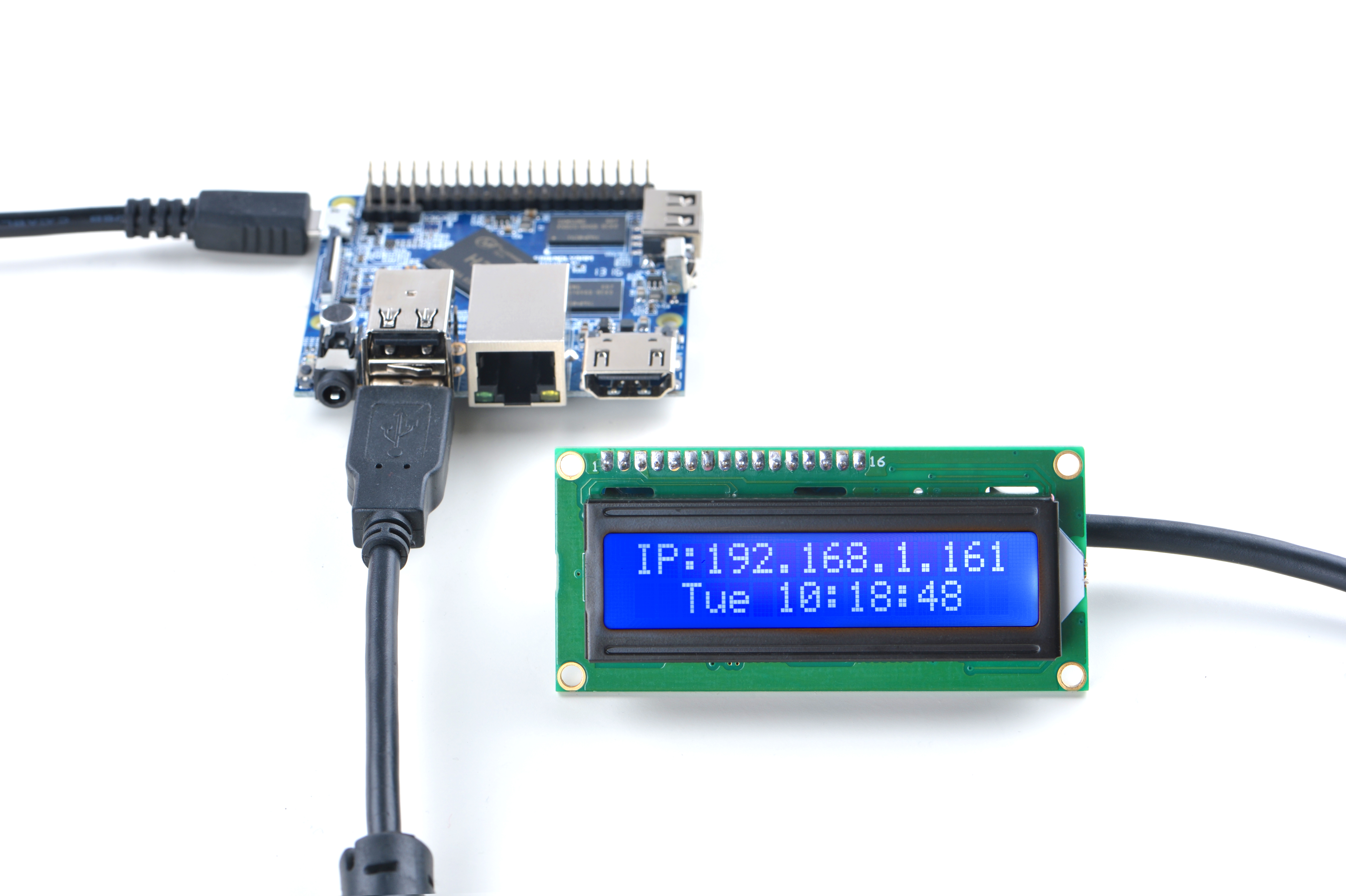
4.2 Connect to NanoPi M2 / NanoPi 2 Fire
Refer to the following connection diagram to connect the module to the NanoPi M2/ NanoPi 2 Fire:
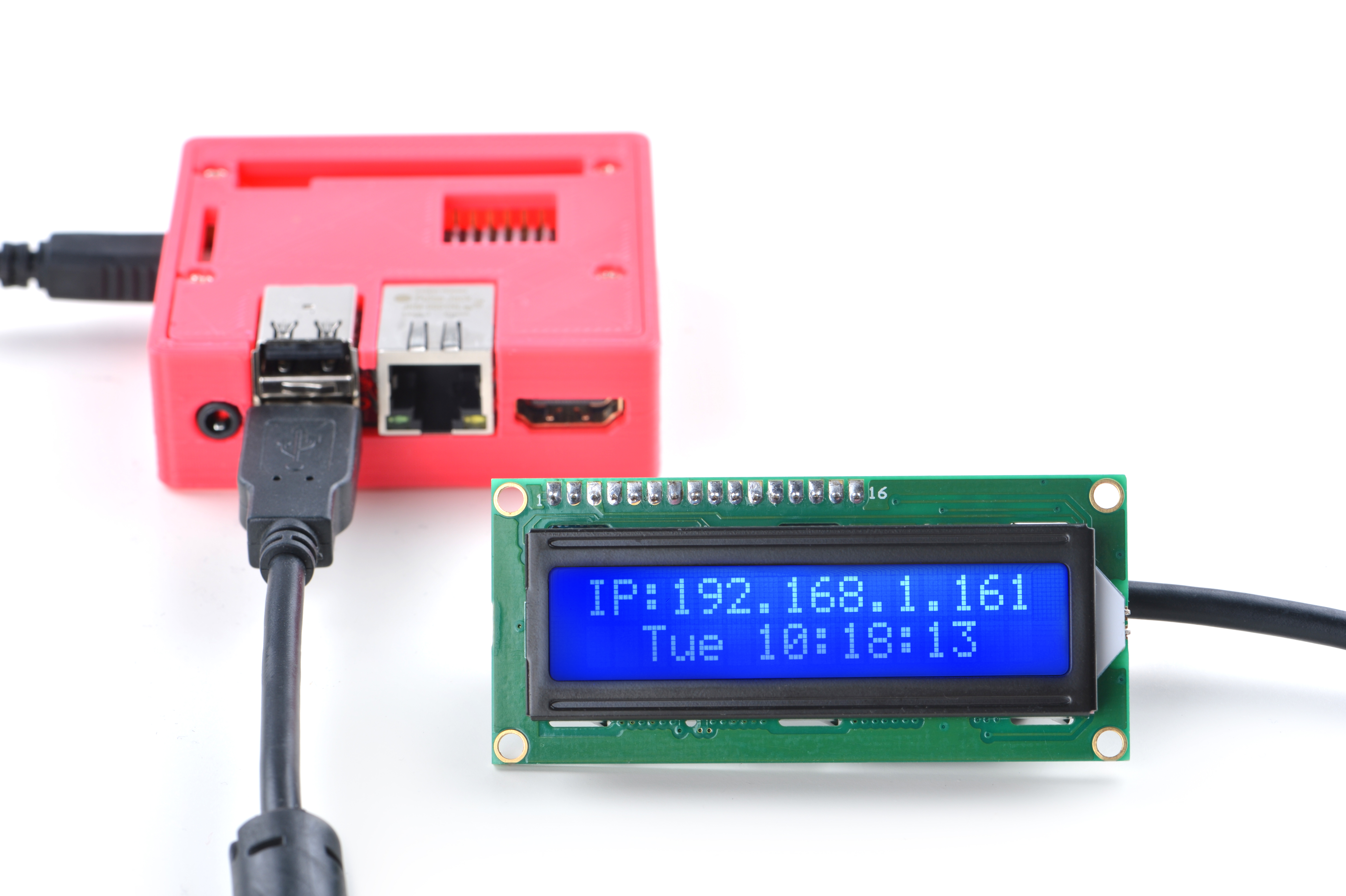
4.3 Connect to NanoPC-T2
Refer to the following connection diagram to connect the module to the NanoPC-T2:
Matrix-LCD2USB_NanoPC-T2
5 使用方法
注意:模块上电后LCD液晶会显示LCD2USB V1.09,如果没有显示,请旋转模块背面的电位器调节屏幕显示的灰度。
5.1 在Ubuntu系统使用lcd4linux
(1)安装lcd4linux
$ sudo apt-get install lcd4linux
(2)连接模块,并查看模块使用的USB端口,本例中使用的端口为usbdev3.2
$ ls /dev/usb*
(3)更改/etc下的配置文件。软件生成的lcd4linux.conf文件较长,新手不容易配置,可重命名或删除后自己新建,并复制下面的配置代码。
$ cd /etc $ sudo vi lcd4linux.conf
输入以下配置信息,并保存。
Display LCD2USB { Driver 'LCD2USB' #模块的类型为LCD2USB Size '16x2' #LCD液晶的尺寸为1602 Port '/dev/usbdev3.2' #使用的端口为/dev/usbdev3.2 } Widget IPaddress { class 'Text' #类型:Text expression netinfo::ipaddr('eth0') #获取eth0的ip地址 prefix 'IP:' #在行初显示“IP:” width 16 #显示宽度:16 align 'C' #显示方式:居中 update 1000 } Widget Time { class 'Text' expression strftime('%a %H:%M:%S',time()) width 16 align 'C' update 1000 } Layout Default { Row1 { Col1 'IPaddress' #在第一行第一列显示Widget IPaddress } Row2 { Col1 'Time' #在第二行第一列显示Widget Time } } Display 'LCD2USB' Layout 'Default'
详情配置信息请参考lcd4linux网站:https://lcd4linux.bulix.org
(4)更改lcd4linux.conf文件权限
$ sudo chmod 600 lcd4linux.conf $ chown root.root lcd4linux.conf
(5)运行lcd4linux
$ lcd4linuxLCD液晶显示信息如下:
5.2 Windows系统使用LCDSmartie
1、模块连接PC的USB口,并安装lcd2usbdriver驱动,LCD2USB提供的驱动下载地址:http://www.harbaum.org/till/lcd2usb/LCD2USB.dll。
2、运行LCDSmartie,软件源码地址:http://lcdsmartie.sourceforge.net/
3、软件界面如下:
4、点击Setup可进去设置页面,配置模块和显示的内容。
LCD液晶显示信息如下:
